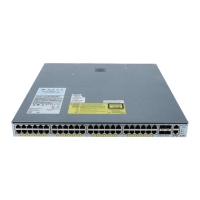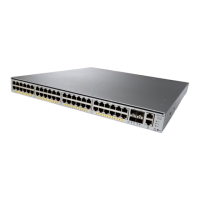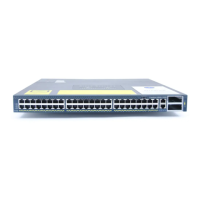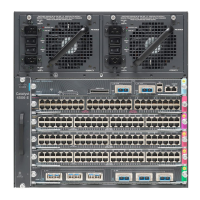Chapter 4: Layer 2 Interface Configuration 61
Section 4-3
Table 4-2 Switch Commands to Display Layer 2 Interface Information
Display Function Command
Port status
(exec) show interfaces [type num]
Port error counters show interfaces counters [broadcast | errors |
{module mod-num} | {trunk [module mod-num]}]
Port MAC address used by the switch
(exec) show interfaces [type num]
OR
show catalyst6500 chassis-mac-address
Port flow control
show interfaces [interface [mod]] flowcontrol
Port negotiation
show port negotiation [mod[/port]]
Port debounce
show port debounce [mod[/port]]
Port inline power show power inline [interface-id] [actual |
configured]
Jumbo frame support
(exec) show interfaces [type num]
errDisable recovery and port status
(exec) show errdisable recovery
(interface) spanning-tree portfast
(interface) switchport mode access
(interface) no channel-group
(interface) no shutdown
Displaying Information About Layer 2 Interfaces
Table 4-2 lists some switch commands that you can use to display helpful information
about Layer 2 interfaces.
You can generate and view reports of utilization, traffic volume, and errors on each port
in the switch. These TopN reports can prove useful if you don’t have network manage-
ment applications that can generate statistical reports about the switch ports.
1. Enable TopN report:
(exec) collect top [number_of_ports] counters interface {type
1
| all | layer-2
| layer-3} [sort-by statistic_type
2
] [interval seconds]
TopN reports enable you to collect and analyze data for each physical port on a
switch. When Top-N reports start, they obtain statistics from the appropriate hard-
ware counters and then go into sleep mode for a user-specified interval. When the
interval ends, the reports obtain the current statistics from the same hardware coun-
ters, compare the current statistics from the earlier statistics, and store the difference.
The statistics for each port are sorted by one of the following statistic types:
